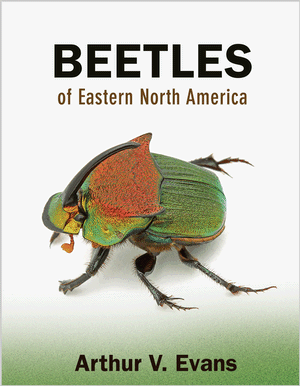
Beetles of Eastern North America by Arthur Evans is a must read for any aspiring entomologist or naturalist. I am proud to have this valuable resource and some of the photos are just works of art. The first 55 pages of this book is a wonderful primer to all-things beetle ranging from behavioral information to ways to breed beetles in captivity. This whopping 500+ page book is not a field guide that you will take on your next hike but it's a wonderful book to use later when you've snagged a few photos of that interesting beetle encounter.
Each species description includes detailed size dimensions and distinguishing features. The last sentence of each description also includes range information but I'm a visual person and would have loved a range map instead of text but it's a small critique to such a beautiful book
This review copy was provided by Princeton University Press.

















































